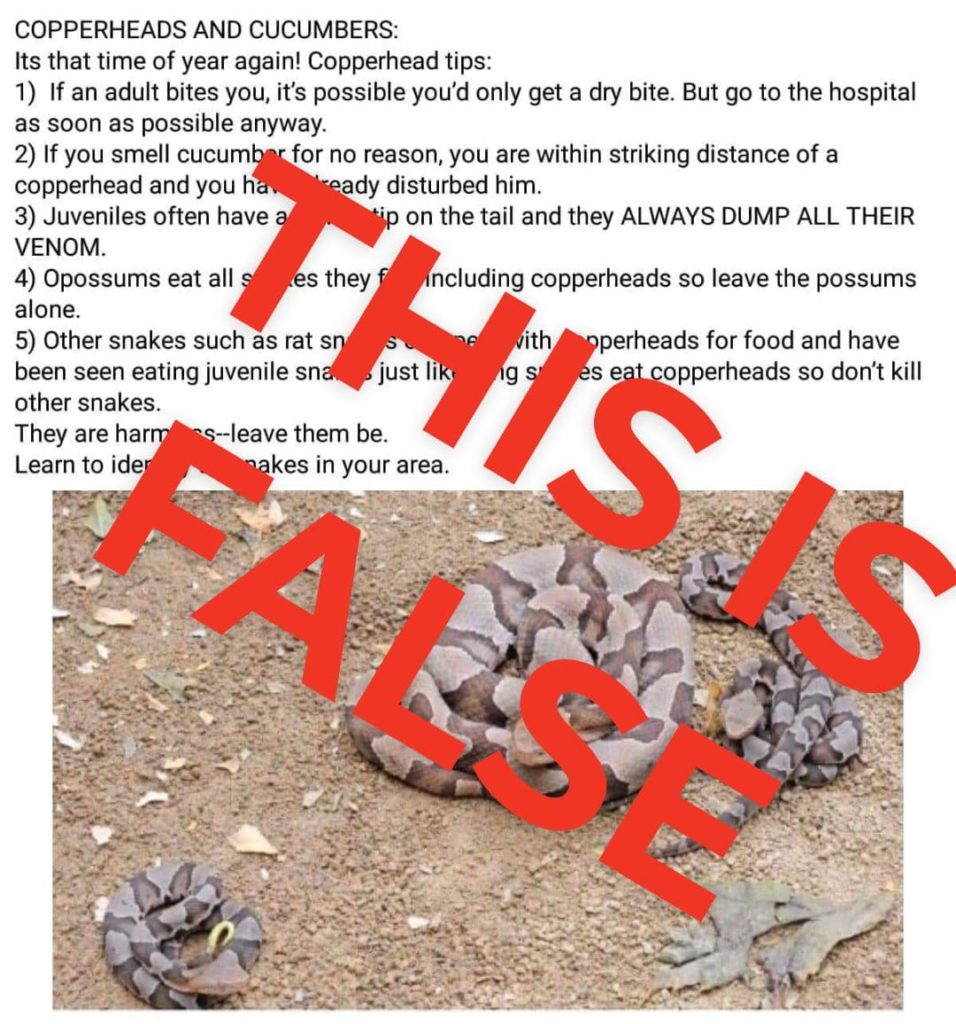
There has been some misinformation being spread around Facebook lately concerning Copperheads (see above). The original post was been shared thousands of times before the original poster finally deleted it. Unfortunately it continues to spread.
Hopefully this post will work to counteract that misinformation and I encourage everyone who reads this to share it.
1. If an adult, or juvenile, bites you you need to seek medical attention ASAP: as the venom professionals say “time is tissue”. While dry bites are always possible with any venomous snake, it’s irresponsible to suggest “you’d only get a dry bite”. This may suggest you don’t need treatment if you don’t feel pain immediately. The only person who can make that determination is a medical professional.
2. While it is a widespread belief that copperheads “smell like cucumber”, there is no scientific evidence backing up this claim. Plenty of people who study wild copperheads and work with them daily have never smelled cucumbers associated with these snakes, even in areas where large numbers of them gather for the winter. Some people have described Copperhead musk as having a “melon or cucumber-like” odor, and it is possible that some people interpret the musk odor this way. Regardless of what they may or may not smell like, this doesn’t necessarily mean you are “in striking distance”. This kind of statement only serves to perpetuate fear.
3. Juvenile copperheads do have a yellow or greenish tip on their tail (as do cottonmouths). The occasional specimen does not. Copperheads absolutely DO NOT “always dump their venom”. This is another widespread myth that has been proven to be untrue. Baby venomous snakes can control their venom just as well as adults. https://www.youtube.com/watch?v=uUuUAhMMm0E
4. Opossums do eat snakes, including venomous snakes. Many predators do. This doesn’t mean they “keep copperheads away” or “eat ALL the snakes” like some people suggest.
5. While there are a handful of observations of ratsnakes eating other snakes, it should not be considered a common occurrence. Most snakes that do eat venomous snakes (such as kingsnakes) also eat a variety of other prey. Some people have the impression that kingsnakes, racers, etc. will eat every venomous snake in existence: this is absolutely untrue. Ratsnakes and adult copperheads eat plenty of rodents, as do many other species. They ALL have a place in the ecosystem and should be respected, even if you don’t like snakes.
Please join us in Wild Snakes : Education & Discussion where your snake questions will be answered by experts.
Please share this post.